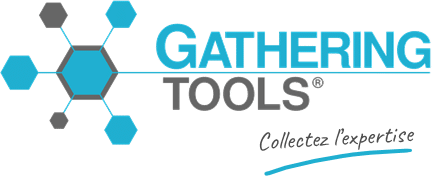Companies with more than 500 employees or generating over €100 million in revenue are required to publish an annual CSR (Corporate Social Responsibility) report.
While the collection of social data is generally planned for and covered by HR software, gathering environmental data is often much more complex and time-consuming.
Larger corporations typically have a dedicated CSR platform, fully integrated with the company’s information system and accessible to all relevant stakeholders.
However, many large SMEs and mid-sized businesses (ETIs) lack such tools.
As a result, they rely on heavy and complex Excel files to gather the data needed for their environmental reporting.
So, how can you streamline CSR data collection—especially environmental data—without a dedicated tool?
Find out in our latest article.
Environmental Reporting: A Challenging Data Collection Process

To produce reliable and meaningful environmental reporting, it is essential to collect the right data. This means gathering information directly at the source—from the various offices, subsidiaries, business units, and stores across a company.
When these locations are spread around the world, this creates challenges related to data formats, heterogeneity, granularity, and reporting frequency.
The types of data collected are diverse and vary depending on the company’s activities: wastewater volumes, energy consumption, various emissions, recycled waste volumes, carbon footprint equivalents, employee commuting methods, share of renewable energy, and more. It quickly amounts to hundreds of thousands of data points—and this number grows every year.
Under such conditions, ensuring accurate and compliant reporting without a dedicated tool becomes extremely difficult. Yet, this is precisely what CSR managers are expected to deliver.
Excel often becomes the go-to solution. However, this does not prevent each entity or subsidiary from using its own processes, which compromises the final quality of the report and creates issues around data centralization (or shadow IT). Furthermore, copying and pasting, exchanging files via email, and manual data validation reduce the reliability of the entire collection process.
As an example, we invite you to explore the use case: “Producing a CSR report from environmental data collected across several hundred sites.”
How to Effectively Communicate and Visualize Environmental Data
Beyond collecting CSR data, the real challenge lies in making it understandable, accessible, and consistent.
It is therefore essential to define the target audiences of the environmental report—both internal and external—the primary objectives, and the key indicators. These indicators will be influenced by regulations, the industry sector, as well as the company’s reputation and communication goals.
Beyond regulatory compliance, CSR reports also serve to communicate internally and externally about the company’s social, environmental, and economic impact.
For the CSR report to be meaningful and have real impact, it is important to carefully choose the presentation format to make it engaging and easy to understand.
Without a dedicated CSR tool, consolidating hundreds of Excel files is critical to producing reliable and interpretable environmental reporting.
However, this step is time-consuming for the teams responsible for collecting and consolidating CSR data.
CSR Data Collection and Validation Workflow

To address all these challenges—from data collection to reporting, including validation at multiple levels—implementing a workflow is a real asset. It automates data gathering as much as possible, saves time for CSR teams, and ensures data reliability.
With Excel files today, it is possible to lock cells and set up macros, but that is not enough: there is no guarantee of data accuracy. Ultimately, consolidating inconsistent, heterogeneous, or sometimes completely incorrect data is pointless.
Controls and validations are therefore necessary to ensure that the collected CSR data is of high quality, clear, and actionable.
This validation step is crucial but also a significant time drain.
Deploying a tool like Gathering Tools structures existing Excel processes and integrates control and validation steps directly into data collection.
The resulting workflows deliver time savings (automatic reminders for missing data, configurable consistency checks, leveraging existing Excel files), improved quality (cell locking, regulated access, consistency controls), and enhanced reliability (consolidation with a few clicks, elimination of copy-pasting, password protection of files).
They also enable validations at intermediate levels (country, entity, subsidiary), tailored to the company’s organization and activity.
A genuine advantage for CSR managers, who gain better control over environmental data.










